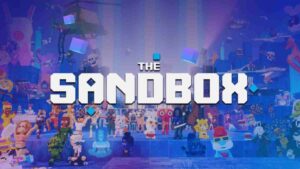Prison Boss: Prohibition takes the original game’s crafting-core concept and stretches it into something bigger literally and mechanically. What started as a confined, rhythm-based loop inside a single jail cell is now a citywide smuggling operation with multiple locations, narrative moments, and co-op play.
That ambition is clear from the jump, but with the expansion comes a few growing pains. Some systems feel sharper, while others get tangled in the scale. What holds it together is still the same satisfying motion-based crafting at the heart of the gameplay.
Core crafting mechanics remain the highlight
At its best, Prohibition leans into what made the original work: tactile interaction and time pressure. You’re bending, folding, packing, and stashing all in real-time with the kind of chaotic energy that VR handles well. The feeling of barely pulling off a risky delivery before a guard rounds the corner is still there, and still fun.
Crafting has been expanded beyond cigarettes and moonshine. You now have access to more materials, blueprints, and assembly methods. That variety helps keep the gameplay loop fresh over time, especially with later recipes that require multiple steps and timing windows.
That said, some of the newer tools and machines feel clunky. They aim for immersion but occasionally cross into awkwardness, especially when handling fine-motor actions under time constraints.
New environments and map progression add scale
Unlike the original’s single-cell setup, this sequel moves players across a larger city map with different districts to explore. Each area has its own layout, delivery routes, and surveillance patterns. That shift adds welcome variety and breaks up the repetition, though not all locations are equally engaging.
Progression now involves completing jobs, earning cash, and unlocking new zones which gives the game a more structured feel but also slows down momentum at times. You’re no longer building a reputation in one space but managing operations across a network, and that can pull the game in a more grind-heavy direction.
Still, the shift from micro to macro works overall. It feels like a world, not just a backdrop.
Co-op is functional but inconsistent
Prohibition introduces multiplayer support, letting two players coordinate their black-market empire. The co-op play is where things can either click or crumble. When both players understand the flow, it adds a great layer of strategy and urgency. But syncing actions isn’t always intuitive, and a lack of role-specific structure can lead to disorganized sessions.
Voice chat is essential, and even then, the UI doesn’t always help you coordinate effectively. The crafting stations weren’t clearly designed with multiple hands in mind, so you’ll often bump into each other or compete for the same resources.
That said, for players willing to work around the friction, co-op adds a lot of replayability.
Visual style stays playful but lacks polish
The game sticks with its cartoon-like, low-poly art, which keeps the tone light despite the criminal premise. Animations are exaggerated, and the environments are bright, almost toy-like a choice that makes the smuggling setup feel more chaotic than dark.
But some visual elements feel underbaked. Certain UI panels are hard to read at a glance, and character animations occasionally glitch or float in strange ways. It’s not game-breaking, but it breaks immersion just enough to notice.
It feels like a step sideways, visually. Functional, but not elevated from what the original already delivered.
A good follow-up that still feels in progress
Prison Boss: Prohibition builds on a clever concept and brings it into a bigger, more interactive format. The core is still satisfying, and the added scale gives returning players more to chew on. But with that expansion comes a few awkward fits in control schemes, progression balance, and co-op usability.
It’s a game that’s easy to appreciate in moments but doesn’t always stay consistent across longer sessions. If the original felt like a tight puzzle box, this one feels more like a rough blueprint of a bigger heist. The ideas are there. Some just need tightening.
Virtual Reality Explorer & Game Reviewer
Always the first to plug in. VRSCOUT dives head-first into the most immersive VR worlds, analyzing mechanics, comfort, innovation, and that elusive “presence” factor. If he says it’s worth it, it probably is.




